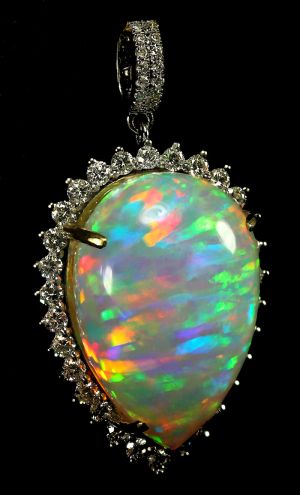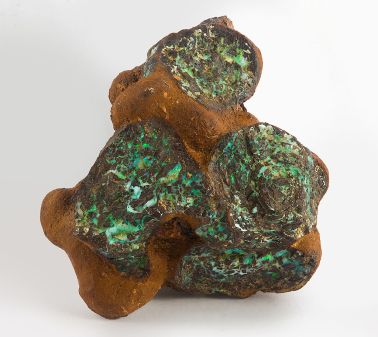A short while ago I wrote a piece giving you a glimpse into the fascinating history of pearls and the other day whilst reading through some myths on jewellery I was reminded of the wonderful history of another favourite of mine, the opal. I have dipped into Fire Opals, which are not real opals, but thought it was time I dipped into the real thing.
Opals have been described by writers in many different ways, and none of them seem to catch the beauty, hints at volcanoes, fire and lightening are ripe in literature and is often referred to with implications of bad luck and evil, but what is this stone really all about? What is the history?
The earliest known opal artifacts were discovered in Kenya, and have been dated to back to 4000 B.C., it is believed that they most likely originated from Ethiopia. It is odd that these days people still believe an opal to be a gem of bad luck, when, for the majority of its long history, it has been considered a lucky stone.

It is the Romans that established this stone as a precious stone, they would get them from trading with the Middle East, and believed they came from India. Though it is much more likely that they came from a nearby mountain range called Cernowitz, in the country now known as Solvakia.
Opals have been considered in many cultures to be symbols of good luck. They were considered symbols of purity in European cultures and were worn by blonde women who believed the gem would stop their hair from darkening. In Arabic mythology it is believed that they were carried to earth in strikes of lightening. It was worn by some to help heal the eyes as it was believed to be beneficial and it was also believed to allow you to turn invisible if you wished on it, giving it associations with thieves.

In the late 18th century the gem started to fall out of favour, there are a variety of thoughts on this and it believed that the book Anne of Geierstein, by Sir Walter Scott, where the Baroness has an opal stone talisman, it is destroyed when holy water is spilled on it and it is destroyed, all that is left of the Baroness the next morning is a pile of ashes in the bed and the feeling behind this was perpetuated when certain members of European nobility refused to wear them, due to their bad luck. Though there is talk of it being associated with the Evil eye in the 16th century.
Queen Victoria did a lot to heal the reputation of opals, she was having none of this nonsense and loved her opals, and had quite the collection, some of which were designed by her husband Prince Albert.
These days most of the world’s opal trade, 95% of fact comes from Australia. In 1606 we have the first recorded document from the Dutch ship, the Duyfken, that tells us the first recorded European discovery of Australia. Nearly 250 years later, in 1849, by the German geologist Johannes Menge recorded the first discovery of opals, it was about 30-40 years later that opal mining in Australia became massive, and miners were be attracted from all over the country for work. Eventually production rates were so high from these mines that mines in other countries could not compete, and most of them closed down. Such as Mexico, which has 100 mines in one area, but the majority of them are closed down.
There is so much to learn about the myths and history of opals, and this is just a brief look at it. I suggest having a read some of the linked websites if you wish to know more.

Reblogged this on hocuspocus13 and commented:
jinxx♠xoxo
LikeLike
Reblogged this on magicandglitterblog.
LikeLike